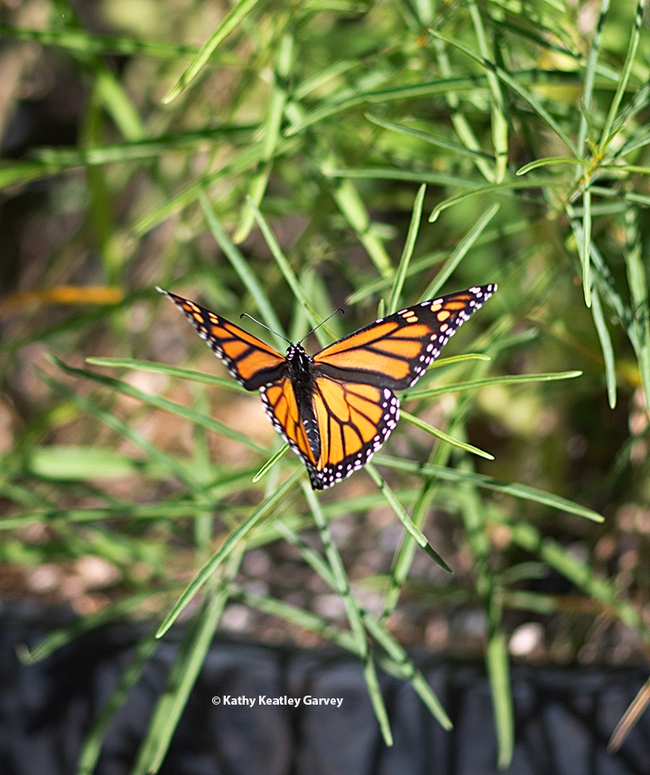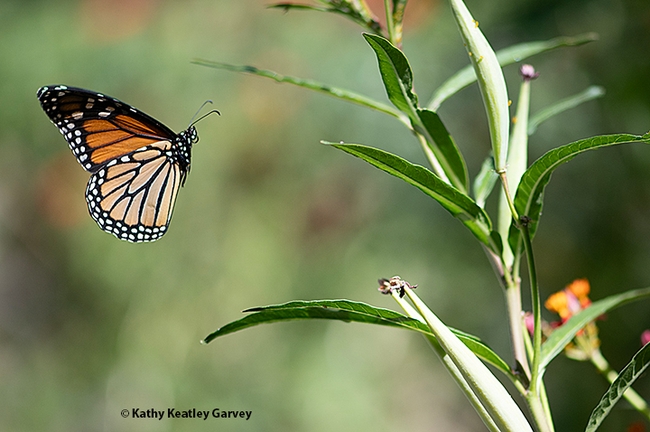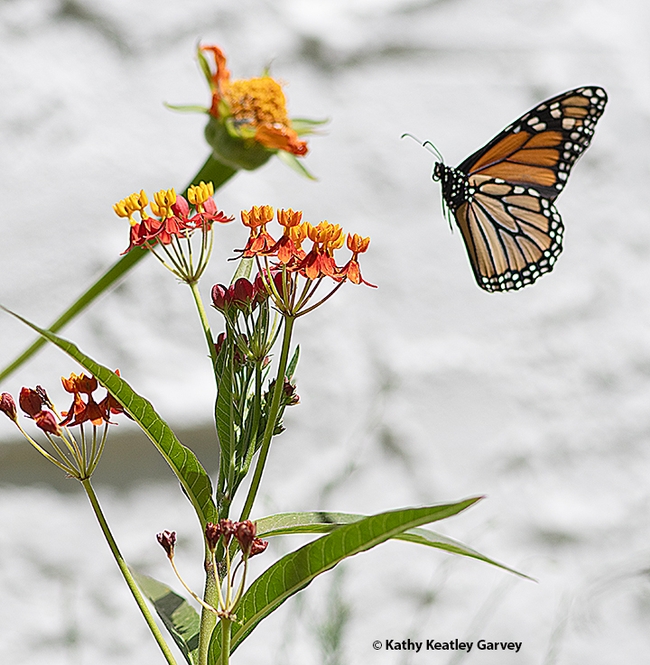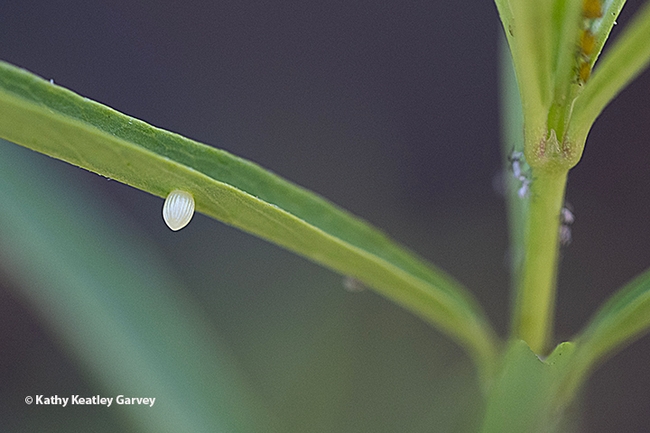And just like that, a female monarch butterfly fluttered into our Vacaville pollinator garden this morning, Aug. 10, and left a dozen or so calling cards: precious eggs.
We earlier saw a male monarch patrolling the garden on the morning of July 23, but he left to go find the girls.
So, total number of monarchs sighted in our garden so far this year: 2. (In 2016, we counted more than 300 eggs and caterpillars.)
Ms. Monarch deposited eggs on three milkweed plants: a narrow-leafed milkweed, Asclepias fascicularis, and two tropical milkweeds, Asclepias curassavica. She favored a lone tropical milkweed thriving in a planter. It's already attracted honey bees, leafcutter bees, syrphid flies, crab spiders, cabbage white butterflies, Gulf Fritillaries, mourning cloaks, gray hairstreaks, Western tiger swallowtails, ants, aphids, and a young praying mantis lying in wait.
Ms. Monarch totally ignored the showy milkweed, Asclepias speciosa, that towers over the garden. Not for me, she seemed to say. Ditto on the butterflyweed, Asclepias tuberosa.
We managed a few images of Ms. Monarch in flight, several images of her laying eggs, and a couple of the ever-so tiny eggs clinging beneath the leaves.
Welcome, Ms. Monarch. Now go tell all your buddies where to find the milkweed of your choice, and the rich nectar sources such as Mexican sunflowers (Tithonia rotunifola).
And you better warn them about that praying mantis...
Attached Images:

A female monarch flutters into a Vacaville garden on Aug. 10 and checks out the narrow-leafed milkweed, Asclepias fascicularis. (Photo by Kathy Keatley Garvey)

The monarch heads for another milkweed. (Photo by Kathy Keatley Garvey)

The monarch investigates a tropical milkweed, Asclepias curassavica. (Photo by Kathy Keatley Garvey)

A tiny monarch egg clings to the underside of a narrow-leafed milkweed, Asclepias fascicularis. (Photo by Kathy Keatley Garvey)